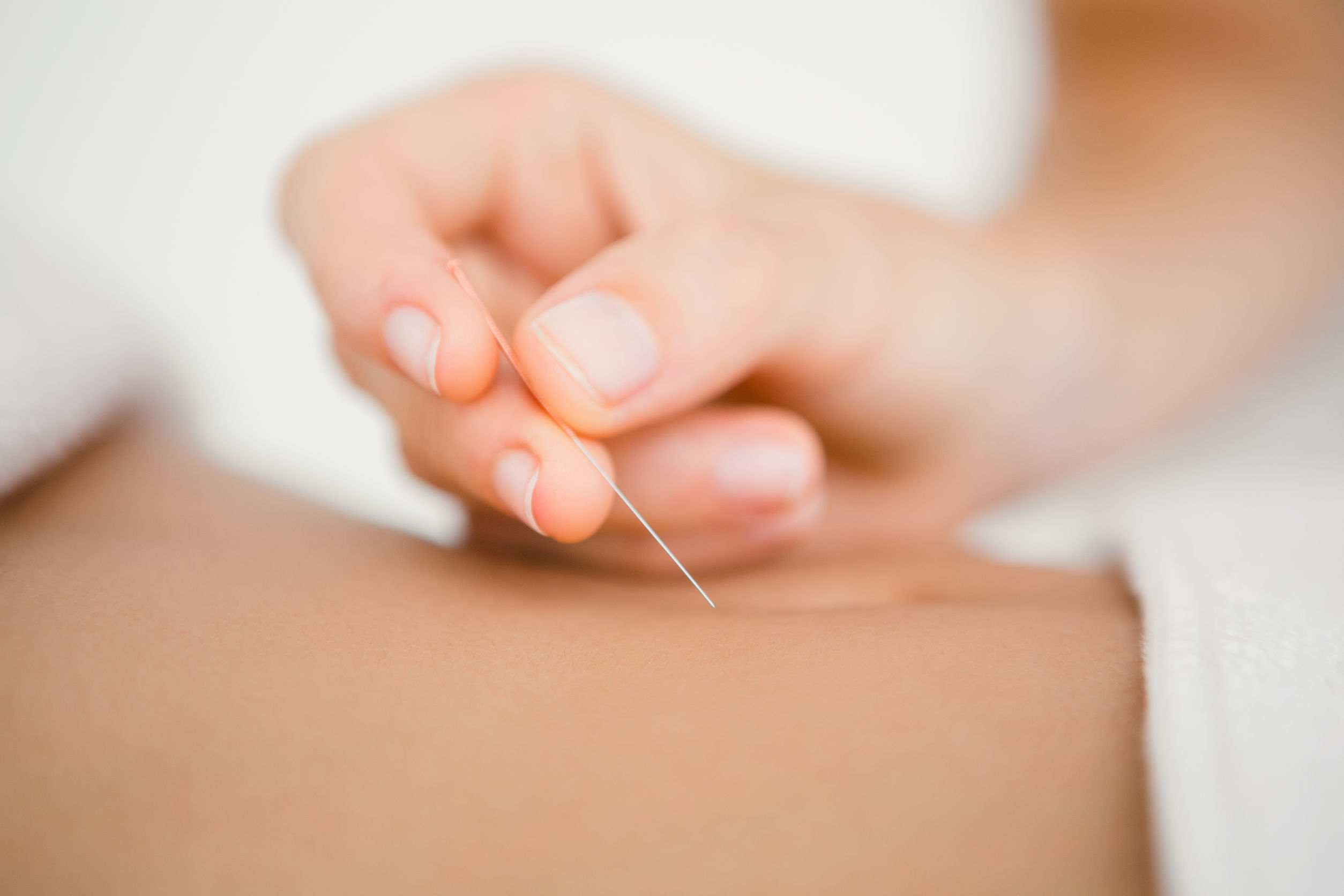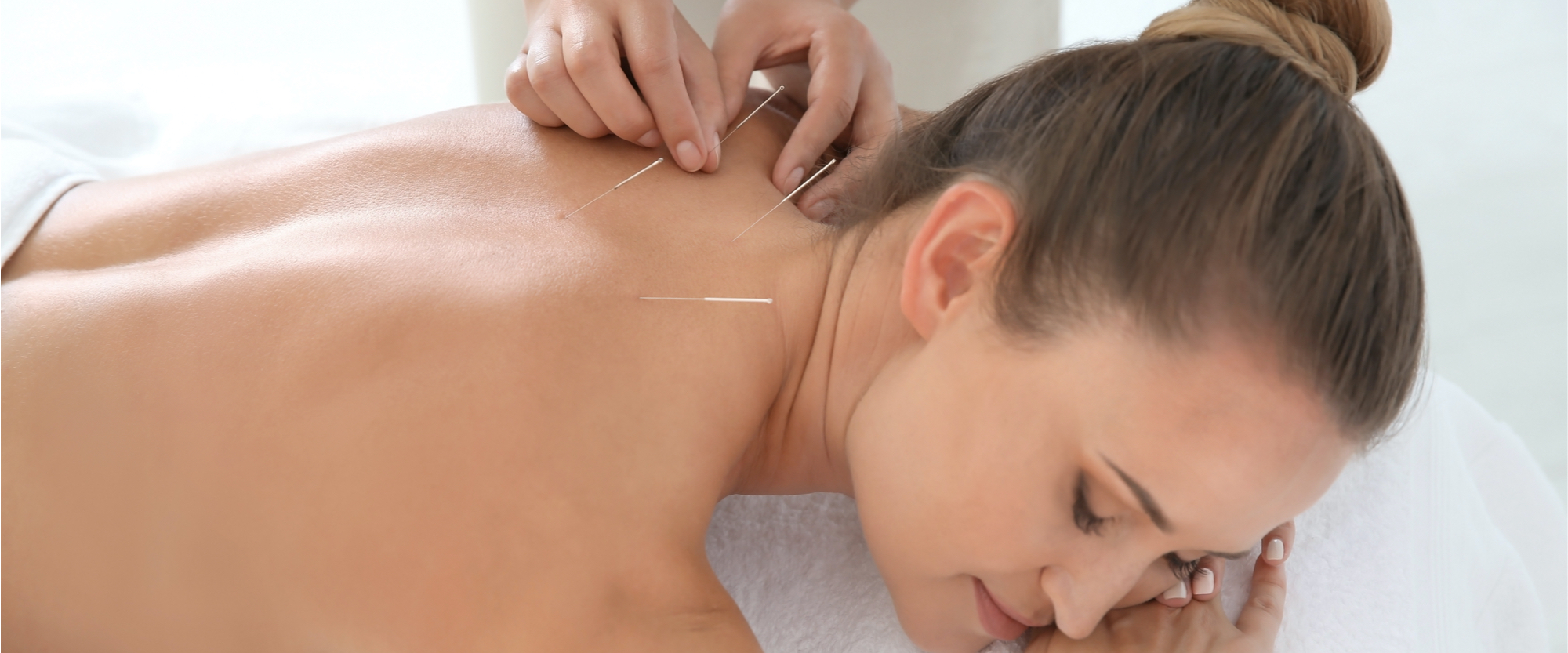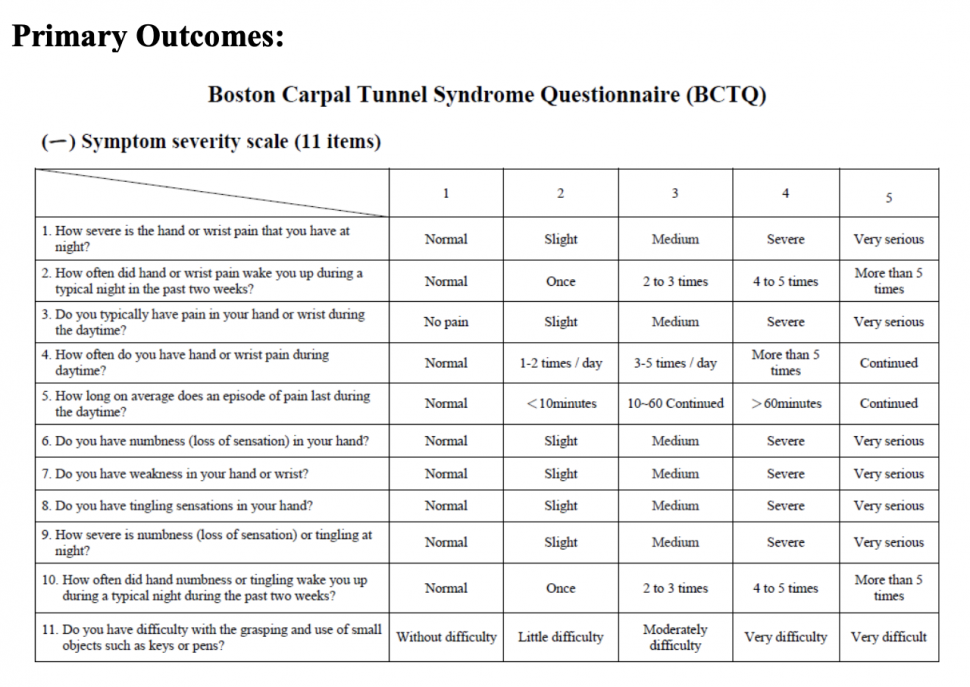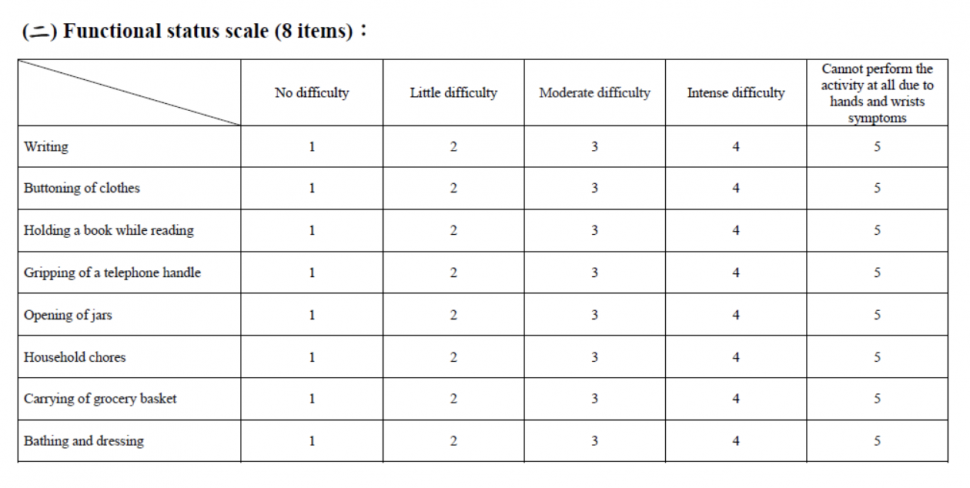Is acupuncture an effective treatment option compared to standard care (anti inflammatory therapy) for mild to moderate Carpal Tunnel Syndrome for tattoo artists?
Carpal Tunnel in the Tattoo Industry
Tattoo artists are a part of an underserved population in healthcare. The art of tattooing requires a lot of repetitive motions utilizing both hands.
Tattoo artists often work long hours, and are constantly using their hands for drawing, designing, typing, and for every-day cell phone use. Stress on the body is added with poor posture, awkward positions, and potential dehydration.
Carpal tunnel syndrome (CTS) is a common occupational hazard shared by many professions, often caused by repetitive motions similar to those used by a tattoo artist.
What is Carpal Tunnel?
The carpal tunnel is a narrow passageway of ligaments and bones at the base of your hand that contains nerves and tendons. Swelling or inflammation of the tendons can narrow the space for the median nerve; resulting in a compressed median nerve, (Medline Plus, 2016).
Other factors that may contribute to the development of carpal tunnel include genetic disposition, trauma, rheumatoid arthritis, diabetes, or obesity. CTS can manifest as tingling, burning, and numbing in the fingers, accompanied with aching hand pain, difficulty gripping, or problems making a fist. Symptoms may begin or can become worsened at night.
An investigation of musculoskeletal discomfort, work postures, and muscle activation among practicing tattoo artists, detailed the risks most tattoo artists experience in their profession. (Keester & Sommerich, 2017) A study published in 2017, by Ohio State University analyzed postural and muscle activity of ten tattoo artists. Wireless electrodes monitored the activity of each artist in the study. Other data related to work patterns and average time spent tattooing was collected from thirty-four participants.
The article highlights, “Tattoo artists are at risk for developing work-related musculoskeletal discomfort,” and more importantly, “Discomfort prevalence exceeded 50% in the neck, back, and upper extremities,” (Keester et al., 2017). Another significant finding by the Ohio State University revealed that all ten artists being monitored by wireless electrodes exceeded the maximum recommended to avoid injury.
Acupunture Treatment for Tattoo Artists Treatment Study:
A prospective pragmatic RCT comparing acupuncture treatment to standard anti inflammatory care (NSAID analgesic pain relief products – Advil) is conducted. The study is designed to show the comparative effectiveness between both types of treatment.
Participants:
There are two groups in which people are randomly assigned to the acupuncture treatment group or standard treatment care. (anti-inflammatory) The study would require 80 patients that are diagnosed with mild to moderate CTS within the ages of 25-65. 40 people will be selected for each group. Patients are recruited through the neurology department in the local hospital and pain management clinic.
Time frame:
Patients in the intervention group will undergo conventional acupuncture in eight sessions over 4 weeks (twice a week) and follow up eight sessions over another 8 weeks (once a week). The total study time is 12 weeks. The control group is given Advil (NSAID analgesic pain relief products) (200mg 3 times a day) for 12 weeks.
Setting:
Acupuncture points used in this study includes some points that were used in previous study (Dimitrova, Murchison & Oken, 2018) in addition to the points obtained by our clinical experience. These points are as followed: LI 5 (Yang Xi): On the radial side of the wrist in a depression between extensor pollicis longus and brevis tendons, found when the thumb is tilted upward.
- LI 10 (Shou San Li): 2 cun below LI 11 on the LI 5 to LI 11.
- SJ 3 (WaiGuan): 2 cun above SJ 4 between the radius and the ulna on the SJ 4 – SJ 10
- line.
- SI 4 (WanGu): On the ulnar side of the palm in a depression between the base of the 5th
- metacarpal joint and the hamate bone.
- PC 3 (QuZe): On the transverse cubital crease on the ulnar side of the biceps brachii
- tendon.
- PC 7 (Daling): Middle point of the distal transverse crease of the wrist, between the
- tendons of palmaris longus and flexor carpi radialis.
- HT 3 (Shao Hai): With the elbow flexed, between the ulnar end of the cubital crease and
- the medial epicondyle of the humerus.
- HT 7 (Shengmen): On the end of the distal transverse creases at the ulnar side of the
- wrist.
Needling details: Depth of insertion: Standard to each point according to classic acupuncture point, De qi sensation, Needles retained for 20 min Acupuncture Needle: 0.25x 40 mm is used Control Group (NSAID analgesic pain relief products): The standard dose of Advil (200mg 3 times a day) is given for 12 weeks.
Practitioners:
The practitioners involved in the study are NCCOM certified. L. Ac.
Population Sample:
According to the interview of Dr. Sagini (Carpal Tunnel Coaching, 2015), there are three stages of Carpal Tunnel symptoms:
- Stage 1 – Mild Symptoms of Carpal Tunnel “Initially people have numbness and tingling mainly at night. When the symptoms are mild, the disease process is usually reversible.”
- Stage 2 – Moderate Symptoms of Carpal Tunnel “When the symptoms are moderate – in that people notice the symptoms both at night as well as during the day time while doing things like driving or talking on the phone or having difficulty with getting dressed, buttoning, holding small objects, that’s when the disease process is more moderate. When the disease process is moderate, we usually can reverse it such that an individual can return to normal function.”
- Stage 3 – Severe Symptoms of Carpal Tunnel “Once the disease process is severe and we’ve lost muscle function, there’s muscles atrophy, there’s constant numbness, sometimes that disease process has reached a point where even with surgical management we’re not able to return someone back to their normal function.” Tattoo artists are a vulnerable population because most artists are underinsured and underserved by healthcare interventions. Most tattoo artists are prone to musculoskeletal conditions due to posture, long hours, poor nutrition, and sometimes dehydration.
1. Tattoo artists diagnosed with carpal tunnel syndrome
2. Tattoo artists with 5 years of experience minimum, diagnosed with carpal tunnel syndrome. Also, tattoo artists that meet the inclusion and exclusion criteria listed below and sign informed consent for the study.
3. Criteria
Inclusion Criteria
- Artists with more than 5 years of experience in the industry
- Licensed artists working out of a shop
- Artists diagnosed with carpal tunnel syndrome in mild to moderate stages
Exclusion Criteria
- Artists with previous physical trauma and injury of hand or arm
- Artists with previous hand or arm surgery
- Artists diagnosed with autoimmune illnesses
- Artists who have contraindication taking Advil
Detail of Study
After selecting patients based on the inclusion and exclusion criteria of the study, we randomly will divide the study patients into two groups. Patients in the control group will receive 200 mg of Advil (3 times a day for 12 weeks). The intervention group will undergo acupuncture in eight sessions over 4 weeks (twice a week) and follow up eight sessions over another 8 weeks (once a week).
Acupuncture points used in this study are included as follows:
LI 5, LI 10, SJ 5, SI 4, PC 3, PC 7, HT 3, HT 7
Eight needles are used for nine acupoints unilaterally for only the involved side. If any patient has bilateral hand involvement, only the more-affected hand will be included in the study. In this method, thin sterile needles (0.25 x 40-mm size gauge) with high flexibility and safety will be used. Acupuncture will be performed while the patients lay relaxed on the examination table in the supine position. Needles are inserted vertically into specific points and kept in the points for 20 minutes.
In the control group (Advil), patients will be advised to take the medication after meals, and if there are digestive problems, or they have any other symptoms, appropriate management is used.
Outcome Measures:
In both groups, we will use the Boston Carpal Tunnel Syndrome Questionnaire (BCTQ) as the primary outcome measure. The questionnaire comprises two scales, a symptom severity scale and a functional status scale. The symptom severity scale has 11 questions scored from 1 point (mildest) to 5 points (most severe). The similarly functional status scale has eight questions scored from 1 point (no difficulty with activity) to 5 points (cannot perform the activity at all).
The overall score for both scales was calculated as the mean of the items. The secondary outcome measure is the Wellbeing Questionnaire, W-BQ12, which has 12 questions within three dimensions: energy, negative wellbeing (anxiety and depression), and positive wellbeing.
At baseline and 4 weeks after the intervention, data related to primary and secondary outcome measures are assessed in both groups, as well as week 12 after 8 weekly follow-up visits.
Results:
It is expected to have no significant differences observed between the two groups at baseline in symptoms scores in the Boston Carpal Tunnel Syndrome Questionnaire (BCTQ) and wellbeing score in W-BQ12. After the intervention, the mean score will be significantly different in both groups and in favor of the acupuncture group. The patients who received acupuncture will have more improvement in all items.
Discussion
The results from other similar studies in Table 1 (Hadianfard, Bazrafshan, Momeninejad & Jahani, 2015) showed that patients with Carpal Tunnel Symptoms who received acupuncture, have greater improvement in pain reduction than patients who received Advil. In BCTQ Symptom, the patients who received acupuncture have more improvement in all items. In BCTQ Function, we found more improvement in the patients treated with acupuncture compared with those treated by Advil.
Wellbeing (WBQ12) score was improved in patients treated with acupuncture than in those treated with Advil. The study shows that receiving acupuncture for 20 minutes/session showed a significant improvement in symptoms due to the release of more neurotransmitters in the central nervous system, and a better local blood supply directed toward the median nerve (Cheng, KJ., 2014).
In Hadianfard et al.’s (2015) study, none of the patients treated with acupuncture developed complications, whereas five patients treated with ibuprofen had gastrointestinal side effects, therefore acupuncture also proved to be superior in safety.
Limitations
The limitations of this study include the low number of treatment sessions in the group treated with acupuncture. If the number of treatment sessions were increased, better therapeutic results may have been obtained. In addition to traditional acupuncture points, more points were used based on our clinical experience in this study. Furthermore, we need to assess the longterm effects of acupuncture on mild to moderate Carpal Tunnel Symptom.
The results of our study showed that short-term acupuncture treatment is more effective than Advil for mild to moderate Carpal Tunnel Symptom.









